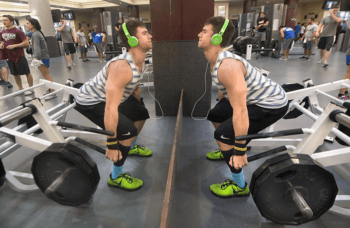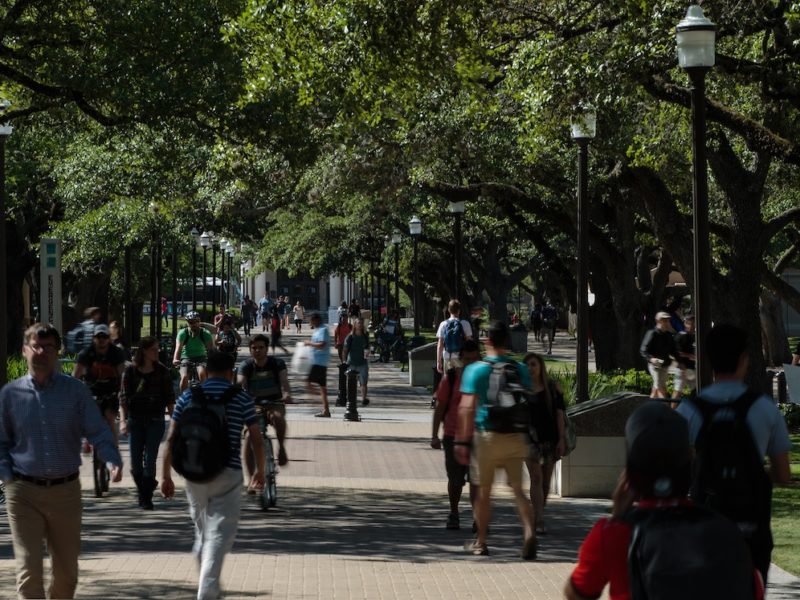Texas A&M Ranks First In Nation For ‘Fitness Campus,’ According To The Active Times

Texas A&M University ranks first among the nation’s colleges for fitness students, according to The Active Times in an on-line spread titled “The 50 Fittest Colleges in America in 2014.”
Texas A&M was followed in the rankings by the United States Military Academy at West Point and the U.S. Naval Academy at Annapolis, where, in both cases, physical fitness specifically figures in the qualifications for admission in addition to academic records and other personal factors.
“Everything from amenities offered at the campus gym to the climate of the area can affect the fitness of a campus,” note The Active Times editors in announcing their rankings. “Professional dietary advice, proximity to outdoor recreation and campus-wide programs all contribute to the well-being of the campus population, too. For our rankings, we considered those factors and others: the number, success and involvement of sports programs (both varsity and intramural), the quality of athletic facilities, the healthfulness of campus dining options, quality of life ratings.”
In the notations about Texas A&M, The Active Times specifically cites the Corps of Cadets, the Student Recreation Center and the large number of students participating sport clubs and intramurals.
“The 2,550+ cadets in the corps, the overwhelming involvement in varsity and intramural sports and one of the most remarkable fitness centers in the country earned Texas A&M the top spot on our list,” states the opening portion of the publication’s write-up about Texas A&M. “One of six senior military colleges in the U.S., Texas A&M has a top-notch voluntary Corps of Cadets program.
“Outside of the corps, the school is well known for its elite varsity athletics and wide-reaching intramural sports — each year more than 12,000 students get involved in more than 34 sport clubs and intramurals. For students looking to get in some solo exercise, A&M is home to a 400,000 square foot recreational sports center. The space includes a swimming pool (housed in its own building), a rock wall and an archery room, in addition to some of the more standard gym features: a track, 14,000 square foot weight room and more than 60 cardio machines.”
Those facts and figures are based on the status of the Student Recreation Center before the start of the $50 million expansion and renovation project that is currently underway. Plans call for the 19-year-old facility to be expanded by approximately 113,000 square feet to accommodate recent growth of the student body, which now totals more than 50,000 on the main campus. The students, along with some faculty and staff members, account for more than 1.5 million entrances annually.
Additional opportunities for students to engage in physical activity are provided by the recently improved outdoor complex featuring 13 lit artificial and natural turf fields where students can enjoy soccer, softball, rugby, flag football, ultimate, and drop-in recreation. A diverse variety of programs and services is also offered, including group exercise classes, CPR certification courses, specialty classes, boot camps, aquatics classes, personal training, and Outdoor Adventures trips and clinics.
“Rec Sports offers a wide range of programs, facilities and services that attracts 92 percent of the student body. The number of students involved in fitness and wellness programs is the reason Texas A&M is the ‘fittest campus’,” notes Executive Director Dennis Corrington.
The Department of Health and Kinesiology in the College of Education and Human Development opened a new fitness-focused facility for use in its teaching and research programs last year and includes provisions for making it available for recreational use during specified hours and periods in cooperation with the Student Recreation Center. More than 25,000 students take classes in the 115,000 square foot Physical Education Activity Program Building.
For more information about the Student Recreation Center, go to http://recsports.tamu.edu/. More information about the Department of Health and Kinesiology is available at http://hlknweb.tamu.edu. To learn more about the Physical Education Activity Program, visit peap.tamu.edu.
More detailed information about The Active Times listings can be viewed here.
Media contact: tamunews@tamu.edu.





